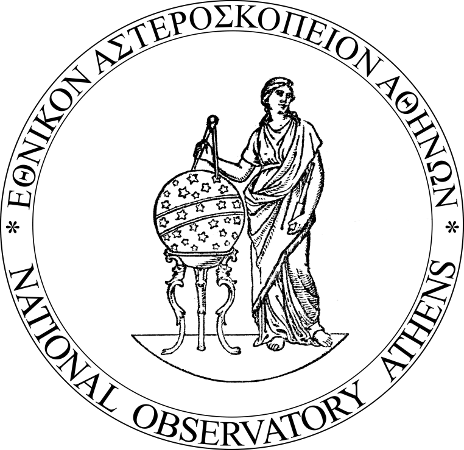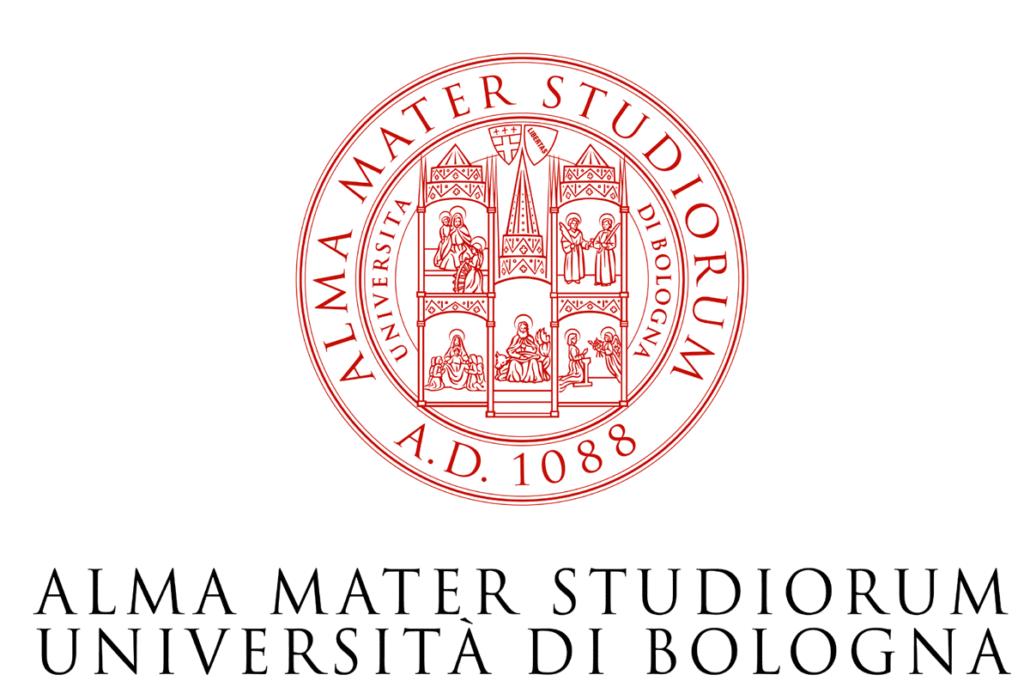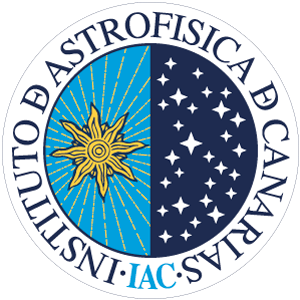Project manager |
||||
@SOTON (University of Southampton, Astronomy Group)Project manager position filled, welcome Ms Helen Taylor ! (application was via JobAd, see also below)The ITN consortium is seeking an experienced and committed manager to lead the development and operational delivery of the network. The successful applicant will manage the operations of the Network. This includes all aspects of the student experience (recruitment, placements, training, progression, graduation), providing administrative support for the ITN Network Director, and 10 partner universities and organisations across Europe. The role holder will also be the primary point of contact for students and staff across Europe and University of Southampton professional services staff on a wide range of issues and will lead and support activities such as workshops, meetings, training events and organise the final project conference. The role holder will also be responsible for providing progress reports to the European Commission and communicating EU regulations to the project partners. The role requires a self-motivated and proactive individual who is a confident and diplomatic communicator with a strong sense of customer focus, and the ability to meet deadlines and prioritise workload. Excellent time management, operations coordination, planning, project management and IT skills are essential, coupled with attention to detail, the ability to be resourceful under pressure, and a can-do attitude. Strong writing skills, the ability to summarise information and write clear concise reports is required for this post. Your application should include a CV and a response to each of the shortlisting questions.
At the University of Southampton, we value diversity and equality. The University recognises that employees may wish to have working patterns that fit with their caring responsibilities or work-life balance. Due consideration will also be given to applicants who have had career breaks for reasons including maternity, paternity or adoption leave, disability or illness. Both the University of Southampton and Physics and Astronomy are proud to hold Athena Swan Silver Awards.
|

|
|||
ESRs |
||||
|
Consortium whide JobAd on EURAXESS |
||||
@UoD (Durham University)ESR position filled, welcome Carolina Andonie !Project 1: The accretion and host properties of rapidly accreting black holes. Objectives: Develop machine/deep-learning algorithms to optimise AGN selection down to the X-ray weak/Compton-thick AGN buried in highly starforming host galaxies. Via detailed SED fitting extract the integrated AGN luminosity (i.e., accretion rate) and host-galaxy properties in terms of stellar mass and star formation rate. Develop Bayesian X-ray stacking tools to explore the X-ray properties of X-ray undetected AGN in IR/submm galaxies. Comparison with zoom-in simulations and cosmological, phenomenological models. Expected Results: Key measurements of the accretion properties of black holes in dust-enshrouded, starforming galaxies from moderate-obscuration AGN to the most heavily buried sources. Constraints on the dependence of obscuration and star formation rate of black holes and their hosts in the IR/submm phase also utilising AGN duty cycles from fractions of active galaxies. |

|
|||
@NOA (National Observatory of Athens)ESR position filled, welcome Brivael Laloux ! (application was via JobAd, EURAXESS)Project 2: Probing the role of orientation in buried AGN. Objectives: Testing evolutionary scenarios of the obscuration properties of Active Galactic Nuclei: this project will use multiwavelength observations to study the accretion properties of AGN (e.g. Eddington ratio) over a wide range of obscuration levels. Any systematic differences will be interpreted in the context of the evolutionary scenario above as well as simple orientation models, whereby the level of AGN obscuration is related to the random orientation of gas and dust clouds relative to the observer. Expected Results: A systematic association of obscured AGN with fast-accreting black holes would provide strong evidence for the evolutionary scenario. Forward-models are expected to be developed for the interpretation of the data. The project will be carried out in collaboration with National Observatory of Athens and the University of Duhram and will use the diverse expertise on both observations and theory offered by the BiD4BEST nodes. |

|
|||
@UNIBO (Universita di Bologna)ESR position filled, welcome Blessing Musiimenta ! (application was via JobAd and EURAXESS)Project 3: Incidence and energetics of AGN winds in the distant Universe. Objectives: Use proprietary and public X-ray (XMM-Newton), optical spectroscopy (SDSS), integral-field-unit observations (KMOS, SINFONI) and millimetre data (ALMA, NOEMA), in conjunction with exquisite multiwavelength information available in the deep extragalactic fields and within the SUBWAYS program, to explore direct and indirect signatures of AGN winds in few tens to hundreds AGN up to z~2. Search for trends in wind properties as a function of, e.g., star-formation rate, AGN luminosity, gas fractions. Compare with zoom-in simulations that use different AGN feedback recipes. Develop neural networks to select strong-wind candidates among X-ray sources, to be then applied to future surveys (e.g., eROSITA). Expected Results: Develop machine\deep-learning methods that use multiwavelength photometric properties to select interesting AGN (strong winds) among X-ray populations. Dissect the interaction of AGN winds with the interstellar medium in high-redshift galaxies. Constrain AGN outflow physics. |

|
|||
@IAC (Instituto de Astrofisica de Canarias)ESR position filled, welcome Giovanna Speranza ! (application was via EURAXESS)Project 4: Incidence and energetics of AGN winds in the local Universe.. Objectives: Study the NIR spectra of type-2 quasars using GTC/EMIR spectroscopy. Determine outflow demography and properties in the ionized and warm molecular phases for a sample of 48 quasars at z<0.14. Characterize the stellar populations of the quasar host galaxies. Comparison with zoom-in simulations with AGN feedback. Expected Results: Dissect the interaction of AGN winds with the interstellar medium of galaxies in the local Universe. Constrain AGN outflow physics. |

|
|||
@UoB (University of Bath, Astrophysics Group)ESR position filled, welcome Mathilda Avirett-MacKenzie ! (application was via JobAd and EURAXESS)Project 5: The role of mergers and disc instabilities in fuelling AGN. Objectives: Calculate state-of-the-art probabilities of merger/bar/clumpiness status of AGN host galaxies based on advanced Convolutional Neural Networks trained against zoom-in, high-resolution hydrodynamic simulations of galaxies with accreting black holes in a cosmological context. Infer intrinsic rates of mergers for the full AGN population. Dissect AGN host morphologies as a function obscuration. Compare with numerical and analytic cosmological models. Develop methodologies for detection of mergers in future surveys (LSST, Euclid). Expected Results: Determine when and where mergers and secular processes can trigger AGN activity. |

|
|||
@NOA (National Observatory of Athens)ESR position filled, welcome Ivan Munoz Rodriguez ! (application was via JobAd, EURAXESS)Project 6: Measurements of the AGN luminosity function and clustering. Objectives: Studying the distribution of accreting supermassive black-holes on the cosmic web: explore the role of environment in the activation of supermassive black holes at the centres of galaxies. Tools and methods will be developed to measure observationally the local density of galaxies in the vicinity of Active Galactic Nuclei. Expected Results: Semi-empirical models will be used/constructed to interpret these results and link the distribution of AGN on the cosmic web with different scenarios for the fueling of supermassive black holes. The PhD project requires both observational and modeling work. It will be carried out in close collaboration with National Observatory of Athens and the University of Southampton and will use the diverse expertise on both observations and theory offered by the BiD4BEST nodes. |

|
|||
@UNIBO (Universita di Bologna)ESR position filled, welcome Ivan Lopez ! (application was via JobAd and EURAXESS)Project 7: Constraints on AGN Eddington ratio distributions from the J-PAS, X-ray, AllWise and LeMMINGs surveys. Objectives: Measure the Eddington ratio (accretion) distributions of AGN by combining the J-PAS narrow-band photometric survey with wide-area and deep pencil-beam X-ray/IR surveys, and complement with the local, complete and multiwavelength LeMMINGs survey with new Chandra full coverage. Comparison with cosmological models. Expected Results: Creation of advanced Bayesian inference and Monte Carlo methods to account for observational selection effects. Multidimensional databases of parameters of interest. |

|
|||
@DIPC (Donostia International Physics Center)ESR position filled, welcome Nischal Acharya ! (application was via EURAXESS)Project 8: Connecting AGN to host galaxy properties. Objectives: Distinguish the spatial distribution of star-formation histories in local (<200Mpc) AGN using the J-PAS narrow-band survey as an efficient integral-field-unit. Bayesian fitting algorithms to the spatially resolved Spectral Energy Distributions to infer physical host galaxy parameters. Comparison with cosmological models. Expected Results: Distinguish the physical links between AGN activity and host galaxy properties (stellar mass, star-formation rate, morphology and/or environment) in the local Universe. Create tools to visualise data cubes. |

|
|||
@SISSA (Astrophysics & Cosmology)ESR position filled, welcome Alexander Sicilia ! (application was via JobAd and EURAXESS)Project 9: Advanced phenomenological models to probe the coevolution of massive galaxies and supermassive black holes through cosmic times. Objectives: Investigate, via continuity equations and subhalo abundance matching techniques, the connection between the growth of the stellar and black-hole components in galaxies through cosmic times. Expected Results: Statistical determination of the supermassive black-hole and stellar mass functions of active and quiescent galaxies at different redshifts with different input light curves. Predict the mean relation between black hole accretion rate and star formation rate as a function of stellar mass and cosmic time. Comparison with multiwavelength AGN samples at different epochs, luminosities, stellar masses, and levels of obscuration. |

|
|||
@UL ()ESR position filled, welcome Evgenii Chaikin !Project 10: High-resolution hydro simulations of massive galaxies and their central black holes with AGN feedback and radiative transfer. Objectives: Use the SPH and grid-based (e.g., RAMSES) hydro solvers to develop high-resolution simulations of galaxies and their black holes. Investigate how the radiation emitted by the AGN couples to the interstellar medium by solving the full radiative transfer equation. Follow self-consistently the chemical evolution of the gas phase. Expected Results: Refined models of AGN winds including impact on warm and cold gas phases. Predictions on spatial distribution, dynamics and energetics of winds to be compared against observations. |

|
|||
@SOTON (University of Southampton, Astronomy Group)ESR position filled, welcome Alba Vega Alonso Tetilla ! (application was via JobAd and EURAXESS)Project 11: Semi-analytic models of black hole growth and galaxy evolution. Objectives: Explore the full evolution of black holes triggered with different mechanisms within large-scale cosmological semi-analytic models (SAMs) inclusive of state-of-the-art thermal/kinetic AGN feedback. Predictions on AGN bolometric luminosity function, Eddington ratio distributions, and clustering properties. Expected Results: Determine the key observational differences among models with different black-hole triggering mechanisms. Create suite of mock catalogues under different assumptions for the underlying physics. |

|
|||
@SOTON (University of Southampton, Astronomy Group)ESR position filled, welcome Hao Fu ! (application was via JobAd and EURAXESS)Project 12: Semi-empirical models of black hole growth/galaxy evolution. Objectives: Construct observational AGN mock catalogues in light cones by populating dark matter haloes with galaxies and black holes using the latest observational constraints on the stellar mass-halo mass scaling relations, black hole scaling relations, AGN Eddington ratio and NH column density distributions. Test how AGN selection methods (e.g., X-ray vs mid-infrared, stellar mass cuts, gas column density) may affect observational results. Also use full semi-empirical cosmological models assigning black hole and galaxy masses via empirical scaling relations in dark matter-only simulations i) at all epochs for centrals (before a major merger), ii) only at subhalo infall for satellites. Predict the impact of mergers and internal disc/bar instabilities in shaping galaxy morphologies. Explore implications for AGN small/large-scale clustering. Expected Results: Test the hypothesis that AGN have environments dictated by their host-galaxy properties. Explore the impact of selection effects on studies of AGN environment and host galaxies. Origin and evolution of scaling relations, velocity functions, black hole mass functions, black hole merger rates (inputs for massive black holesâ gravitational waves background estimates), luminosity functions, two-point correlation functions. |

|
|||
@LMU (USM, CAST)ESR position filled, welcome Luca Sala ! (Application was via IMPRS and EURAXESS)Project 13: AGN evolution processes and galaxy formation physics in cosmological, multiscale hydrodynamical simulations. Objectives: Test different physical processes for black hole fuelling and related AGN activity in cosmological, hydrodynamical simulations. Develop and implement new models for mechanical AGN feedback in state-of-the-art, magneto-hydrodynamical simulations inclusive of cosmic rays, self-consistent chemical evolution, radiation and cooling processes. Test uncertainties of sub-grid model parameters on black hole properties and AGN appearance. Compare predictions from multiscale simulations for the connection between AGN evolution, host galaxy properties and large-scale environment with observations. Expected Results: Dissect the physical processes that are responsible for the growth of black holes and the feedback by AGN across cosmic time. Specify uncertainties driven by unknowns in the sub-grid models. Provide insight into the coupling of different physical processes acting within the centres of galaxies. Produce comprehensive predictions of the black hole and AGN halo occupation, the black hole spin distribution and merger rates, and the AGN activity across cosmic times and environments. |

|
|||
